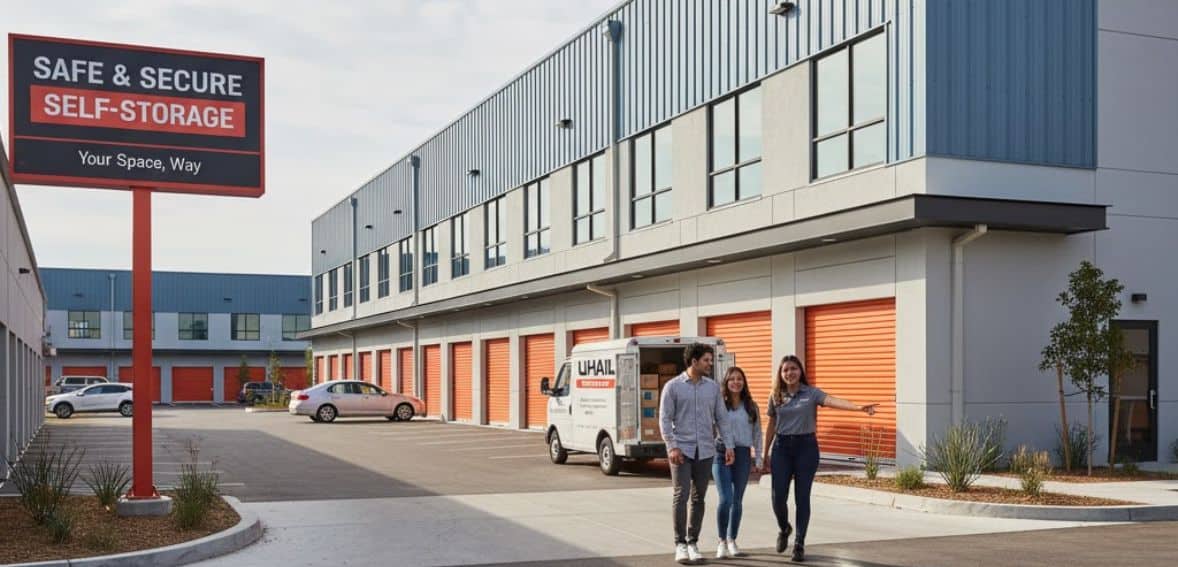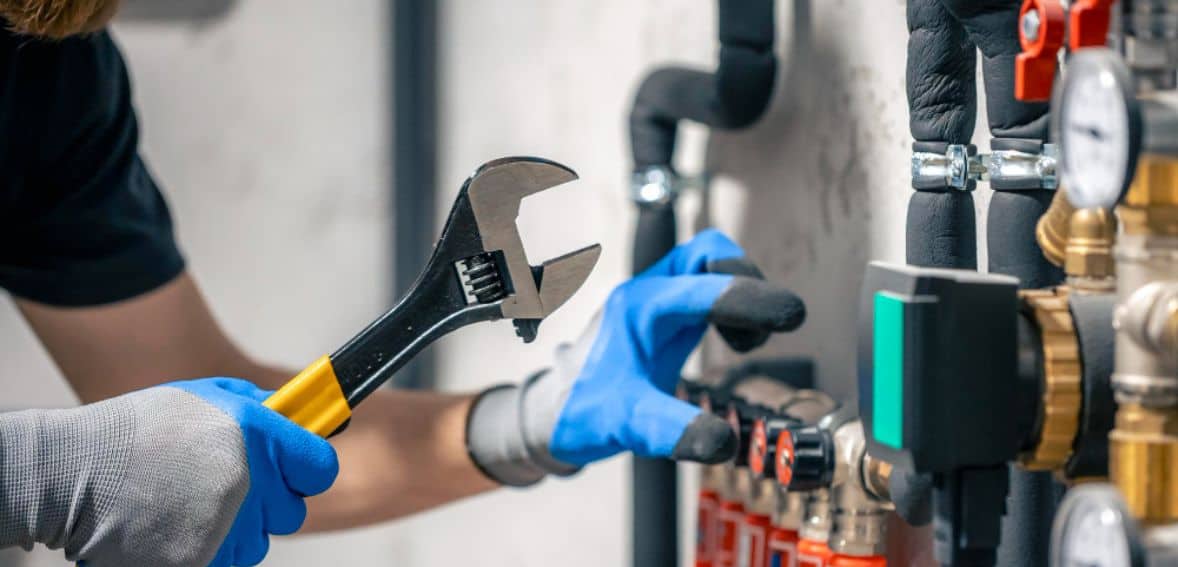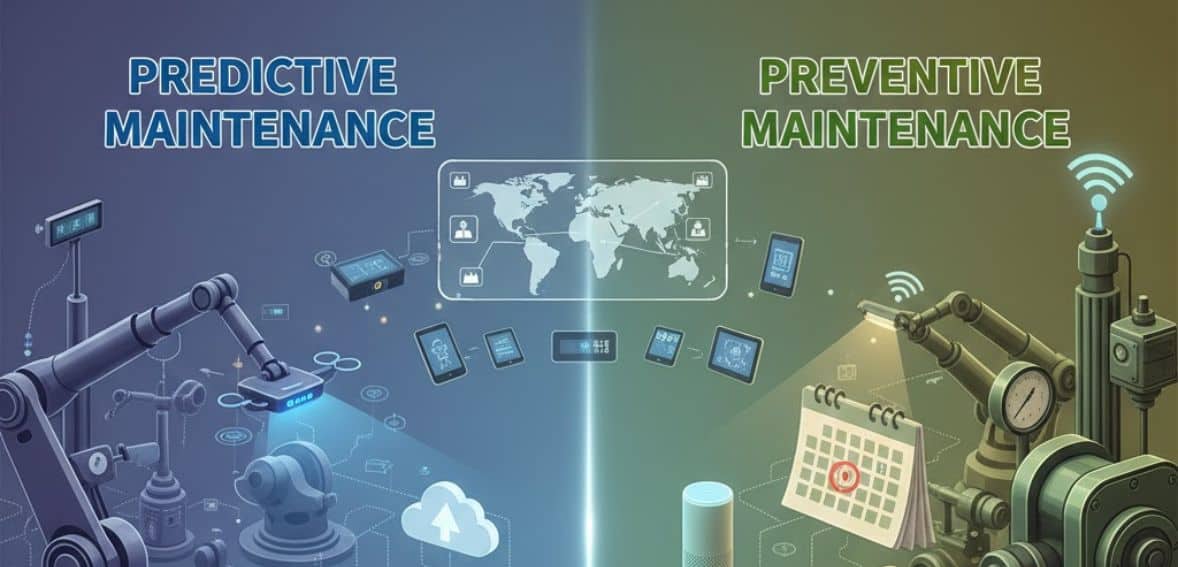
By Rinki Pandey October 28, 2025
Predictive maintenance is proving to be an important strategy for self-storage managers looking to maximize efficiency and reduce unexpected repair costs. With sensors and intelligence technology, owners of facilities can detect problems before they lead to equipment failure, thus ensuring seamless operations, higher customer satisfaction, and lower long-term maintenance costs.
Common Mistakes to Avoid When Starting a Self-Storage Business

Starting a self-storage business can be profitable, but little mistakes can easily turn into costly problems. One of the most common mistakes is naming your business after a location. While having your town name in your business name might sound like a wonderful idea initially, it may limit your ability to grow. A flexible name allows your business to grow into new markets without having to rebrand.
Secondly, inadequate choice of location is another problem. Consider local demand, population, and competition prior to a decision. A location that is hard to access or not readily visible from major paths of travel can reduce walk-in traffic and rely too heavily on advertising to fill units. Choose a prominent, convenient, and accessible location in order to maximize occupancy.
Thirdly, most of the new companies also fail to prepare growth plans. In the absence of more space or solid design for scalability, growing further in the future is difficult and expensive.
Other commonly found mistakes are ignoring online marketing and assuming dependence on traditional reservation systems. A presence on the web, search engine optimization, and listing in Google My Business are key to attracting customers. Emerging self storage management software also provides seamless automation of bookings, payments, and customer communications.
Finally, security and pricing controls also play a huge role. Customers want to feel confident that their belongings are safe, so install cameras, lighting, and secure doors. Price is regularly based on demand, so you can stay competitive and profitable. By avoiding these common mistakes and planning ahead, you can build a successful and scalable self-storage business.
Key Technologies Driving Predictive Maintenance in Self-Storage Operations

Predictive maintenance in self-storage facilities is spurred by a blend of advanced technologies that allow managers to detect and fix issues before they lead to costly downtime. A highly influential tool is the Internet of Things (IoT) and smart devices. IoT sensors are placed on equipment such as HVAC, elevators, and automated gates to collect data round-the-clock on areas such as vibration, temperature, and pressure. This close observation enables the detection of unusual patterns and the handling of new issues in advance, keeping operations flowing smoothly.
Secondly, Big Data Analytics is also a key factor. Warehouse sensors produce massive amounts of data, and the software in analytics interprets it all. By analyzing trends and patterns within the data, managers can predict when certain parts are going to fail and schedule maintenance ahead of failure. This makes repairs cheaper and minimizes surprise downtime.
Thirdly, machine learning is also a major contributor. These algorithms learn from the data gathered with sensors and learning from past maintenance activities to make improved predictions for the future. They learn and improve with the passage of time, becoming more precise, which allows maintenance teams to act at the best time. Since the efficiency of equipment can change depending on usage, machine learning adapts with new data, giving continuity and precision.
Cloud Computing provides the capability and resources to store and process all this data at an affordable cost. It allows self-storage owners to access maintenance records anytime, anywhere, without the expense of in-house servers. Cloud-based systems allow for simpler analysis of data from multiple facilities and application of predictive models for different types of equipment. This facilitates decision-making in real time to track asset performance and react quickly when needed.
Lastly, Digital Twins are an essential strategy for maintenance in the modern age. Digital twins are virtual representations of physical assets that mimic how equipment would react in real-life conditions. With digital twins, self-storage managers can simulate how various scenarios—such as heavy usage or extreme temperatures—could impact performance. This anticipates failures, allows for better maintenance planning, and prolongs the life of important assets without disrupting daily operations.
Collectively, these technologies make predictive maintenance a valuable capability for self-storage owners to provide reliability, increase efficiency, and reduce surprise repair costs.
The Growing Importance of Predictive Maintenance for Self-Storage Properties

Predictive maintenance is becoming an important part of self-storage business management to allow owners to stay ahead of costly and inconvenient equipment problems. Within a self-storage facility, machinery like climate control systems, gates, elevators, and lighting must operate at all times in order to keep things running smoothly and customers happy.
Predictive maintenance uses smart sensors and monitoring hardware to scan the performance of these systems in real time and notify managers when something starts to show signs of errors or inefficiency.
This is done by performing repairs prior to them failing, avoiding sudden breakdowns and expensive repairs. It also saves repair time because the technicians know what is to be repaired in advance and can accordingly prepare the right parts and equipment. In the long term, this preventive action prolongs the life of critical assets because minor problems are corrected before they destroy their structures.
Predictive maintenance is also data-driven, allowing managers to schedule repair or replacement when it least interferes with operations. This eliminates unnecessary work in maintenance while ensuring the systems’ reliability. Most importantly, it improves safety by catching prospective danger before it results in accidents or harm, protecting workers and customers.
By reducing downtime, increasing reliability, and making safer and more efficient operations possible, predictive maintenance plays a critical role in enhancing the overall performance and profitability of modern self-storage businesses.
Challenges of Self-Storage Operators In Implementing Predictive Maintenance
While predictive maintenance offers substantial advantages to self-storage businesses, it comes with challenges of its own that facility owners need to overcome.
Firstly, the biggest challenge is cost. It costs money to install sensors, smart monitoring systems, and data management software, which can be an expensive addition for small storage businesses. Operators might already have some level of equipment in place, but adding predictive technology and hiring data specialists increases costs.
The second obstacle is the technical aspect of the system itself. Predictive maintenance relies on the collection and analysis of lots of data from different equipment, like HVAC, doors, and elevators. It requires technical skills to understand this data, which can be overwhelming for staff who are inexperienced with modern monitoring systems. Without training, staff can’t understand the data or respond to maintenance alerts appropriately.
Thirdly, data accuracy is also a common issue. Predictive maintenance is entirely dependent on accurate data, but sensors can fail, lose signal, or stop reading because of full databases or dead batteries. Incomplete or inaccurate data could lead to incorrect predictions, prompting maintenance teams to overlook genuine problems or react to false alarms. Data accuracy requires constant vigilance and regular equipment validation.
Many self-storage companies are also challenged by the absence of expertise. Predictive maintenance typically demands machine learning knowledge, analytics, and data interpretation skills—which are not necessarily available to every facility employee. It can be costly to hire or outsource this expertise, but without it, predictive tools are not used to their full potential.
How to Implement Predictive Maintenance in a Self-Storage Business
Placing predictive maintenance on a self-storage business starts with an identification of what equipment or systems are most critical to your business. Perhaps you are considering HVAC equipment, access gates, security cameras, lighting, or elevators in multi-story facilities. Once those items are identified, you need to establish how they are performing now and how often they fail. Establishing this baseline enables you to spot early signs of errors or failure.
Start by reviewing maintenance history records, energy bills, and the performance history of your equipment. This information gives you insight into trends and lays the groundwork for predictive monitoring.
Secondly, review potential failure points—such as worn-out gate motors or inconsistent HVAC systems—that cause downtime or affect customer entry. Having an idea of how often and how severely these occur will allow you to prioritize maintenance allocation.
Once critical assets and failure modes are isolated, install IoT sensors to track performance parameters such as temperature, vibration, or energy usage. For example, sensors can detect when a motor is overheating or a gate system is slowing down. Over time, algorithm-driven software will interpret the data and know when maintenance needs to take place.
With cloud-based solutions, you can monitor multiple assets throughout your facility in real-time without slowing down staff. Integrate the system with your maintenance software, and it automatically alerts technicians when problems might arise. This approach reduces unexpected downtime, prolongs equipment life, reduce security threats and maintains your storage facility secure, efficient, and reliable for renters.
Best Practices for Implementing Predictive Maintenance in Self-Storage Operations

In order to maximize predictive maintenance, self-storage managers require an understandable and hands-on strategy. The initial step is knowing the equipment within your building—be it HVAC units, security doors, or elevators- and their maintenance requirements. It facilitates the identification of which assets are most vital to daily business and where predictive solutions can have the greatest impact.
Start small by working on your most critical systems first. Once you start seeing improvement, you can roll out the program to the rest of the departments. Your predictive models will also need to be reviewed and optimized from time to time to improve their accuracy over a period of time, as conditions and equipment performance can change.
Secondly, consider human capability with technology. Sensors may detect early warning signs of errors, but on-site engineers can confirm and interpret what the data shows. Through this collaboration, more stable decisions and fewer chances of over repairing are achieved.
Thirdly, the information gathered must then be used in creating a proactive maintenance calendar. Scheduling work based on equipment condition allows facilities to save repair time and cost. Periodic monitoring of performance and adjusting as needed is also required to ensure an effective system.
Last but not least, training the staff is essential. Everyone involved needs to understand how predictive maintenance works and how to actually utilize the equipment. An effective maintenance management system also includes monitoring outcomes, reporting equipment performance, and measuring long-term benefit. Properly executed, predictive maintenance can cause self-storage facilities to run more smoothly, save cash, and provide a more secure experience for operations.
Comparison Between Predictive and Preventive Maintenance

Aspect | Predictive Maintenance (PdM) | Preventive Maintenance (PM) |
Definition | Real-time data and the condition of the equipment are used to plan maintenance ahead of time. | Maintenance is done on a set schedule based on how often the equipment is used or how long it has been in use, no matter what condition it is in. |
Basis | Based on data and conditions. | Based on time or use. |
Technology Used | Uses the latest tools for analysis and forecasting, like sensors, the Internet of Things (IoT), machine learning, and CMMS. | Depends on a set calendar or meter readings to schedule maintenance. |
Data Collection | Devices that monitor conditions (such as temperature, vibration, and noise) are used to gather data in real time. | Maintenance is done at predetermined intervals with little to no real-time data collection. |
Effectiveness | Extremely effective—maintenance is only performed when required, cutting expenses and downtime. | Can result in either excessive or insufficient maintenance, raising expenses or failure risk. |
Tools | IoT sensors, CMMS software for scheduling and asset tracking, and machine learning algorithms. | Basic logs, manual tracking systems, and maintenance checklists. |
Goal | To avoid breakdowns, anticipate probable failures and carry out maintenance just in time. | Regardless of the true need, do routine maintenance to avoid problems. |
Cost | increased initial outlay because of the need for training and more sophisticated technology. | Reduced initial cost but potentially increased ongoing maintenance costs. |
Best For | Operations aiming for minimal downtime, maximum efficiency, and dependability. | establishments with minimal data needs or basic equipment. |
Conclusion
Predictive maintenance is a smart investment for self-storage businesses that want full control over their operations and not be surprised by unexpected repair costs. Through data intelligence and preventive maintenance, owners can optimize equipment life, reduce downtime, and deliver an enhanced customer experience. As the industry expands, adopting predictive maintenance will be a long term growth investment in being competitive and progressive.
FAQs
What is predictive maintenance in self-storage?
It is a data-driven preventive strategy that identifies equipment problems in advance to avoid unplanned failure and downtime.
In what ways does predictive maintenance reduce expenses?
By reducing downtime, prolonging equipment lifespan, and resolving problems before they become costly ones, it lowers repair costs.
Which tools are employed in predictive maintenance?
Analytics software, sensors, and Internet of Things devices aid in tracking equipment performance and forecasting likely maintenance requirements.
Can the customer experience be enhanced by predictive maintenance?
Yes, it provides dependable performance, secure facilities, and improved service, all of which increase client satisfaction and confidence.
How much does it cost to implement predictive maintenance?
The long-term advantages of fewer repairs and downtime outweigh any potential higher upfront costs.